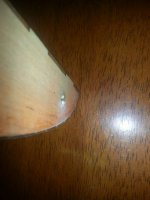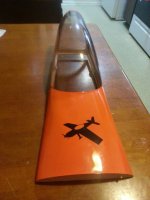This may help. Straight from the ama site.
"We have to review a bit of theory to answer this question. We don’t need Bernoulli or any of that fancy stuff; airplanes fly because the wing pushes down on the air and the air pushes back up against the bottom of the wing. This is a bit of an over-simplification, but that’s okay for right now.The high-pressure air on the bottom wants to leak upward through the aileron hinge gap. The effect of high-pressure air leaking out from under the wing, through the gap between the wing and aileron, is bad. This leakage causes a loss of lift and hampers good roll control.The problem of aileron hinge-line leakage gets worse when the airspeed is low and the angle of attack is high, and it gets even worse when aileron is drooped. High angles of attack result from pulling “Gâ€s or from flying slowly. As the angle of attack increases, the leak worsens.
The leak is further worsened when you apply aileron control. The depressed aileron forces the air downward so that the local air pressure is even greater. The leaking air squirts out as a “sheet†that eventually breaks up and joins the airflow past the wing. Until it breaks up, that sheet of air looks like an aileron pointed the wrong way. It’s not made from wood, but it is real.Another problem that can occur with ailerons is adverse yaw, which is yaw in the opposite direction of the desired roll. Sealing the gaps gets rid of the leakage problem and reduces (but not eliminates) adverse yaw. It also makes the ailerons more powerful, so you can reduce the aileron throw and still get the same control effectiveness.Aileron seals have no bad effects that I am aware of. They can actually have good effects, such as saving servo power, preventing flutter, and making the airplane behave better during takeoff and landing."



